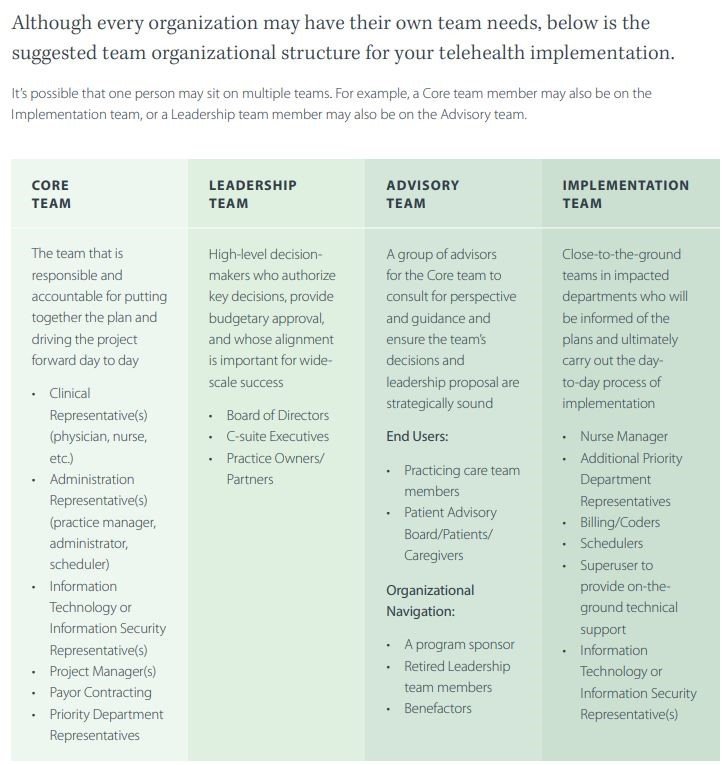In facing a global pandemic, patients and providers everywhere are being forced to re-evaluate access to healthcare. For patients, the days of personal house calls made by the family pediatrician seem quite distant. Senior care and elective surgeries might never be the same. And for physicians, well—most healthcare organizations are still strictly limiting in-person care on an as-needed basis.
Still, people need to keep up with care, and most are looking for the same connection, familiarity, and trust that they had in their healthcare provider before COVID-19 swept the globe. If anything, the pandemic has only intensified this demand, and telemedicine—or “telehealth”—has answered the call quite nicely, finding useful applications in a variety of patient settings.
Today, well into the U.S. pandemic response, telehealth has become a mainstay that patients understand and expect. Now, as we begin to slowly—cautiously, optimistically—look at what’s coming beyond the Age of COVID-19, many healthcare insiders believe that patients will continue to choose telehealth, or at least expect it as an option. And medical practices are closely considering how to invest in telehealth moving forward.
“Telemedicine isn’t going anywhere,” says Andrei Zimiles in Medical Economics. “83% of patients expect to use telemedicine after the pandemic resolves.” How it will look once things return to normal, however, is another question. So, how are some of the largest medical groups in the country adapting and preparing for the future of telehealth?
RELATED: The Future of Telehealth: a Hybrid Approach
The Current Climate: Why and Where Telehealth Makes Sense
First, consider the shifting landscape. Healthcare consumers have changed. They’ve had to! Amid this pandemic, caution and convenience carry the day. Fear and anxiety are at an all-time high. Many patients have had little choice but to opt for telemedicine as a way of maintaining their healthcare needs due to different restrictions and healthcare protocols designed to slow the spread and limit exposure.
Psychiatry and therapy come to mind, as do front-line symptom checks for COVID-19 evaluations. But at-risk populations must now reconsider even routine visits in light of the pandemic, constantly weighing the value of the visit against the risk of exposure.
While there will be continued demand and necessity around telemedicine as a result, the majority of patients still prefer face-to-face care and consultations. Assuming regular in-person appointments become “safe” again, it’s safe to assume that patients will once again want to interact and be seen in-person by their physician the way they normally would, especially if a COVID-19 vaccine becomes widely available.
Where telehealth will persist will depend on where it creates value, a sense of security, convenience, or ease for patients. With telehealth eliminating the patient’s need for travel, for instance, first-time consultations conducted virtually (and according to best practices) can limit risk and reinforce a patient’s comfort level. From there, patients might have the option to schedule their next appointment in-person or again via telehealth. Under this future model, telehealth adoption will be driven by patients, by circumstance, or both.
The Long-Term Telehealth Investment
While telehealth adoption may slow after the pandemic, healthcare providers need to plan today as if telehealth will be a major part of their future patient experience. Put simply, the scope and shape of your telehealth offering will require a long view squared firmly on your patient demographics.
To that end, ask yourself:
- Does the population your practice tends to serve warrant a long-term investment in telehealth?
- Does your target demographic use or want a telehealth option?
- How prepared or technically savvy is your target demographic to learn and use telehealth?
- How will telehealth help you serve patients better, solve their problems, and support strategic business goals?
These are important questions to ask. Just take it from Vice President of Growth Marketing Summit Partners, Cody Lee: “Telehealth is a major undertaking for an organization to offer. And, I’m glad to hear organizations talking about the patient experience in reference to telehealth because it’s not as simple as throwing up a Zoom and having a discussion. Developing a platform can take a while and it’s an investment. I think we have to start with the patient in terms of not just specialties but also what demographic are you going after.”
Beyond delivering a good experience, how can telehealth help your practice reach a larger market by eliminating barriers that a target demographic might have struggled with in the past? Is there a patient population with accessibility, distance, or safety limitations that you can now serve through telehealth? Think about:
- The elderly
- Physically disabled or convalescent patients
- Patients living in remote areas
- Patients who cannot, will not, or prefer not to go out into public for their care
- Therapy and psychiatry patients
Finally, consider the technology, IT infrastructure, and personnel requirements needed to deliver seamless telehealth services. Depending on the size of your healthcare organization, IT change management for the deployment and support of telehealth can be significant, including new additions to your tech stack, training, and onboarding. And in an environment where the people involved in setting up and delivering a telehealth practice include IT professionals, practice administrators, marketing stakeholders, and of course nurses and physicians, collaboration will be essential.

“Building that framework requires proper technology, examining cost, educating users and providers, hiring those involved in managing the telehealth system, managing the system itself, and the integration of collaboration potentially foreign to the operations of an existing healthcare organization,” adds Cody Lee.
The Chance to Differentiate Based on Hard Data
In response to the COVID-19 crisis, healthcare organizations around the country acted swiftly to ensure patient safety and slow the spread, including new telehealth offerings. In doing so, a blueprint was established for the future, one that’s now supported by quite a bit of data.
Moving forward, providers have the opportunity to refine, recalibrate, and re-deliver their telehealth practice based on the data they’ve gathered since first launching this option. When analyzing your telehealth offering, consider the following data points (and listen to what patients are telling you!):
- Device. Do patients tend to access telehealth appointments from their smartphones? Laptops? And is your telehealth experience optimized accordingly?
- Reviews, and feedback. How are your patients rating their experience with telehealth? Do you have an operationalized way to solicit customer feedback, organize it, and extract actionable insights that might help improve the telehealth experience?
- FAQ. Which cases, questions, tech support issues, or concerns related to telehealth are driving the most calls to your contact center? Do you have adequate content built to answer these questions online, and to prepare your agents with?
- Booking and show rate. A dip in show rate for booked telehealth appointments could indicate a technical, communication, or awareness problem the needs to be addressed.
Providers that can scrutinize the data across the patient journey—and successfully deliver an exceptional patient experience—will stand out from competitors and ensure ongoing adoption of telehealth. Indeed, this part of your offering might well become a key differentiator.
The Telehealth Demographic
As we said, healthcare providers and consumers are now adjusting to the unpredictability and uncertainty created by COVID-19. And the widespread use of telehealth has revealed some useful demographic information.
Providers have seen little interest in telemedicine from individuals aged 60 and up, for example, perhaps due to technical limitations or other barriers to entry. Other demographics, however, such as digital natives, seem to be far more comfortable adopting this new option for care.

While all patient populations deserve the best you have to offer, an investment in your future patient demographic is a wise one. By being proactive and educating the younger, more tech-savvy population, healthcare providers can offer the stability these patients will be looking for in, say, ten years when their healthcare needs change and they comprise your core patient population. By then, consumers will be familiar with telehealth as part of their “new normal” without question (assuming providers do the work now to normalize telehealth for these demographics today).
From awareness, communication, and scheduling, to marketing, education, and the first-time visit, “focus on the patient funnel is at a pinnacle right now,” offers Leslie Gibbs, Chief Marketing Officer with Modern Vascular. With trust in a provider’s telehealth practice comes adoption and, hopefully, an increased sense of ease. Ideally, telemedicine will be an answer, not an obstacle, helping patients accommodate busy schedules, evaluate doctors before visiting, find providers in other locations, and “investigate” potential health issues proactively.
The Forecast for Telehealth Marketing Best Practices
Initially, marketers were tasked with simply letting the market know that telehealth is an option at their practice. What it is. How to use it. Why it’s required. This might have been as simple as a website FAQ, or as comprehensive as a full-on campaign including advertising, content marketing, and social media.

As we move into 2021 and the demands of telehealth continue to evolve, so too will the ways we market these services. Based on the data created up to this point, especially around location and demographics, marketers have the opportunity to create more targeted telehealth campaigns. The availability of telehealth in new practice areas, for example, or new data and testimonials around how effective telehealth has proven can help infuse new campaigns with people-first messaging and engaging content.
Still, and as we reiterate in our recent guide to telehealth marketing best practices, the core tenets of a patient-centered approach will remain. Here’s what we mean:
- Attracting and converting patients with a compelling, compassionate, empathetic message
- Make the patient journey clear, simple, and sustainable
- Provide additional resources and educational content that enrich the telehealth experience
A little “we’re in this together” sentiment can go a long way, especially when marketing a telehealth offering that is new to both practice and patient. In our work with healthcare clients, telehealth patient stories, such as testimonials or videos, as well as “how it works” content, have been quite effective in building trust and overcoming barriers to adoption.
For Telehealth, This is Just the Beginning
Needless to say, telehealth won’t disappear once the pandemic has passed. Both the immediate and widespread need for telehealth, as well as the relaxation of laws and regulations to allow for expanded patient access, have created enough space for telehealth to become a mainstay (which is certainly nice to know should another crisis emerge requiring lockdown, quarantine, and social distancing measures).
Traditional healthcare will always have its place, but change is inevitable. The healthcare industry needs to be ready to adjust accordingly and with multi-pronged strategies designed to continue delivering superb care to a diverse set of demographics no matter the market conditions.
That said, it’s imperative that healthcare organizations lay the groundwork now—that they build the patient-first, patient-focused telehealth strategies that will be needed in the post-COVID world. Of course, ongoing education and promotion of telehealth, for both patients and providers, will be key in reinforcing this patient-centered framework and bringing the experience full-circle.

